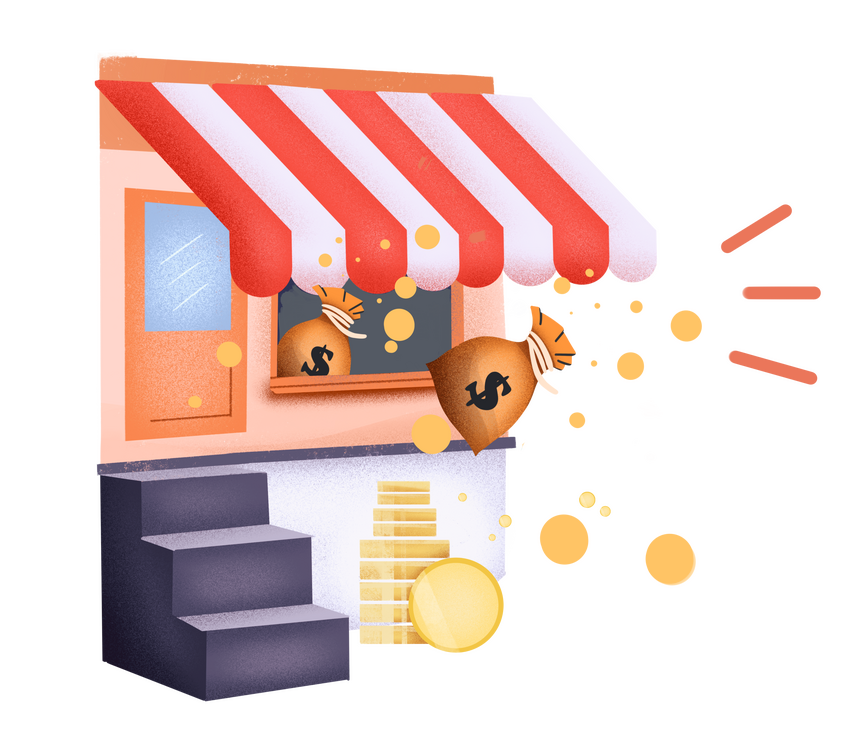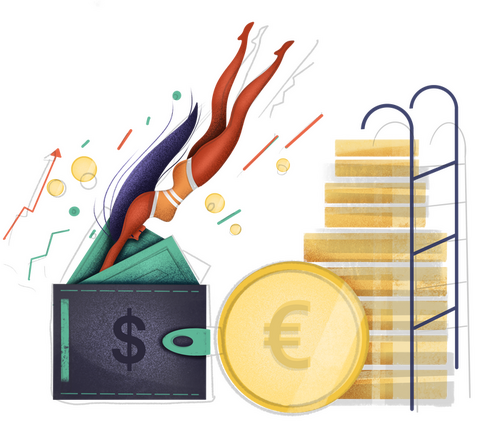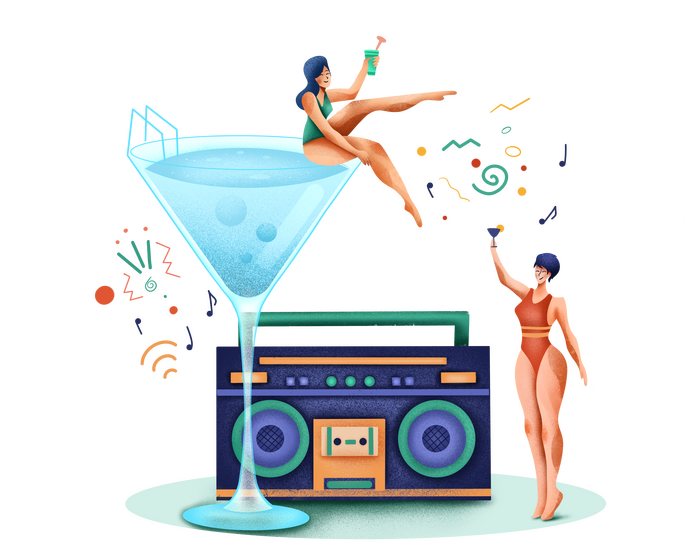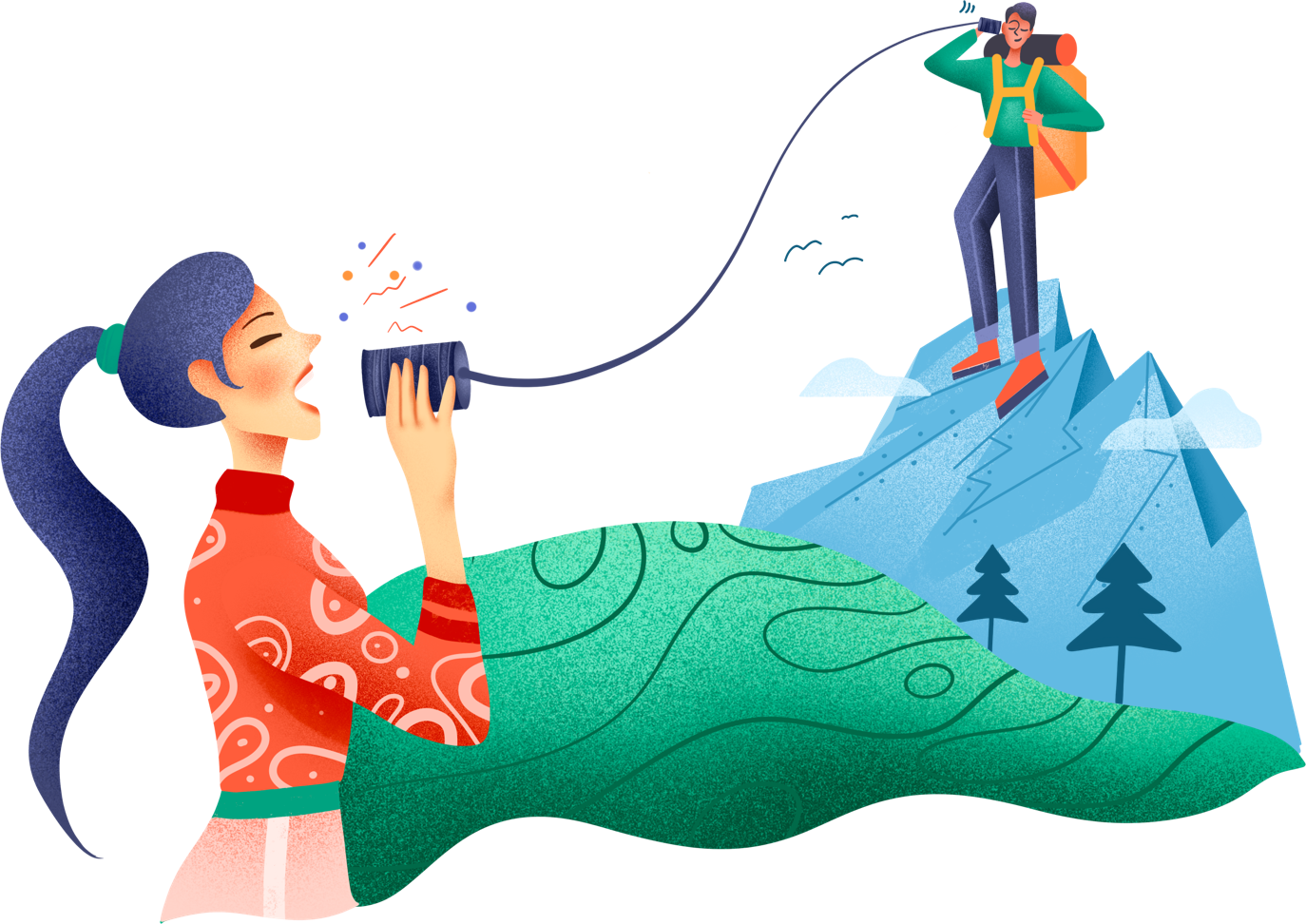Launching a Shopify store is exciting, but like...anyone can do it. What really matters is setting it up in a way that turns visitors into buyers.
To do that, there’s a lot you need to get right; and an abysmally small number of merchants do. Particularly in today’s heavily saturated eCommerce landscape, customers can afford to be highly selective. If you don’t provide them with the experience they want, they’ll find someone who will. Make it complicated to buy from you, and they’ll hightail it elsewhere.
Ahead, the top 5 mistakes that could cost you the sale and how to solve them.
Why is My Shopify Store Losing Money?
Your Product Images Aren’t Optimized
Seems like a small thing. Isn’t.
Many, many new Shopify merchants overlook or deprioritize image optimization, and considering that 75% of consumers report product photography to be “very influential” when they’re deciding whether to buy a product...well, you get it.
What makes images “not optimized”?
- They don’t look professional or appealing
- The majority of the image area is not focused on your product
- They don’t show the product from different angles (this is literally infuriating)
- There are only one or two images
- They don’t have descriptive names and alt texts
- The image files haven’t been compressed before uploading
Since online shoppers don’t have the luxury of seeing and feeling products in person, images are the next best thing. An optimized virtual experience ensures they’ll have enough information to feel confident in their purchase. (The savviest brands are going well beyond mere mortal images with integrated AR technology. It doesn’t get any closer to “real life”, and offers conversion rates that are 250% higher!)
What’s more, image optimization improves page load speed and helps with SEO.
The consequences for failing to optimize images in several bummers: an amateur appearance, increased bounce rate due to slow page load speeds, and low visibility on search. Whomp, whomp.
Sounds Bad. How Do I Optimize Images on my Shopify Store?
1) Make sure you’re using high-quality photos that help your products shine. Hire a professional product photographer if you need to — someone who knows how to take appealing shots from different perspectives. (And then upload all of those perspectives to your product pages.)
2) Give your images descriptive names and alt text (aka “alt tags”--a text string that indicates to screen readers and search engines what’s in the image). For example:
- Bad Image Name: product847-Sep-22-2021
- Good Image Name: soundproof-wireless-headphones
- Bad Alt Text: headphone photo
- Good Alt Text: wireless headphones with mic and noise cancellation
On Shopify, you’ll see the option to add alt text when you edit or modify a photo.
3) Compress 👏 your 👏 images 👏.
The most common reason for slow page load speed is a glut of gigantic image files. Accustomed to instant gratification and likely possessing the attention span of a goldfish (don’t we all these days?), your would-be customers aren’t going to wait more than three seconds (that’s not an exaggeration) for a page to load. Image compression is a super easy way to speed up page load and keep shoppers on your site!
The internet is full of free compression tools, but we love Squoosh.
You’re Neglecting Your Brand Image and Identity
Appearances matter. Even if you’re not a big, established brand yet, it doesn’t hurt to look like one. (Dress for the job you want, yo.)
When it comes to branding, the devil’s in the details. That means:
- Creating a cohesive, consistently executed brand strategy (and refreshing when necessary)
- Paying attention to your website’s design
- Making sure your logo appears on all the pages (including the checkout page)
- Avoiding grammatical errors/typos in your content
- Putting a favicon on it
Tf Is a Favicon?
A favicon is the little icon that appears in the web browser tab when you visit a site. It’s a minute detail, but one customers will notice if it’s not there (and a missed branding recognition opportunity to boot).
To add a favicon to your Shopify store, log in to your admin dashboard and go to Online Store > Themes > Customize. Then click Theme Settings and select Favicon
Bottom line: take your time. Consumers are drawn to thoughtfully-formed, authentic brands. If you’re one of those (you should be :)), make sure your website reflects it.
You’re Not Targeting Abandoned Carts
When a shopper adds items to their cart but doesn’t complete the checkout process, that’s an abandoned cart. Frustrating as it might be to see those customers going to the brink of purchase and then walking away, they’re actually the easiest to convert since they’re already interested in those products. All you need is to give them an extra push in the right direction.
If you want to go the native route, Shopify has a feature to help you handle abandoned checkouts. To review your abandoned carts, log in to your Shopify account and go to Orders > Abandoned Checkouts.
From there, you can send a cart-recovery email to any customer, nudging them to complete their purchase. Just select the number of the checkout and click Send a cart recovery email.
If you want Shopify to automatically send those emails (um, who wouldn’t?) that’s an option as well! To set it up, go to Settings > Checkout > Abandoned Checkouts.
Check the box which says Automatically Send Abandoned Checkout Emails and select the duration Shopify should wait before sending the email, then click Customize Email. Once you edit the email template, you’re all set.
If you’d like something more robust and true-to-brand, using an email marketing platform like Klaviyo is the way to go. With Klaviyo, you can activate different branches for your email flows by crafting several different emails and then creating “if/then” conditional splits that dictate the type of email the customer receives. This allows you to target specific kinds of customers with messaging that’s more likely to convert them, instead of just hollering “COME BACK!” at everyone who abandons.
For example, you can branch your flows based on customers (people who have made a purchase with you before) and non-customers (those who haven’t), offering a small discount to the newcomers and familiar messaging to the old guard. (“Hey, we had a lot of fun with you last time. Ready for a second date?”)
Other branching options include:
- International and domestic shoppers
- Product category or collection
- Cart value
- Cart size
The surest way to turn lookiloos into purchasers is to create an experience that’s as close to custom-tailored as you can get. The abandoned cart process is a super easy, high-converting place to start.
You’re Not Turning Visitors into Leads
Your products are divine, your website is beautiful and the UX is flawless. Every visitor who waltzes into your store falls in love, buys all the things, and remains devoted to you for life.
Then you wake up. Sigh.
Most first-time visitors exit a brand’s store without making a purchase. This could be for myriad reasons, but the most likely is that they just don’t trust you enough (yet) to take the plunge.
That being the case, laying some groundwork for an actual relationship will go a long way in making those customers feel comfortable enough to make a purchase. That means staying top of mind for them and letting them know you’re thinking of them, too!
Stay Top of Mind
Have you ever checked out a product online and noticed the same product being advertised on other websites you visit? It can feel like creepy consumer stalking, but really, it’s just remarketing.
Both Google and Facebook Ads allow you to reach people in this way-- advertising to people who have already visited your website to invoke a sense of familiarity and remind them of your brand.
Let Them Know You’re Thinking of Them
One of the cornerstones of eComm success is having a solid email marketing strategy. Given that over 70% of consumers report a preference for email communication, it stands to reason that, even if a new visitor isn’t ready to make a purchase, they may be amiable to providing their email address so they can stay “in the loop” with your brand--especially if properly incentivized to do so. Tako’s CEO, Grace, had to chime in:
“10% off in exchange for an email address doesn’t work anymore. Everyone’s inbox is just endless chaos and noise, and no one wants more of it. Offer your customers something of such value they can’t help but offer their email in exchange. 20% off is the minimum I recommend, but if you can’t swing that site-wide, offer a heftier discount on a higher margin product or collection of products (i.e. 50% off any accessory).”
As you start building your email list of prospects, you can create an automatic flow of emails to be sent at regular intervals. Start with non-promotional emails focused on brand awareness and relationship building before slowly nurturing your contacts towards a purchase
Whoop, there it is...again. 👀 Klaviyo is well-equipped to help you handle all things email marketing--from collecting email addresses on your site to creating customer “segments,” brilliantly customized emails, and strategic flows to ensure the right people are getting the right message at the right time.
You’re Keeping Things Too Transactional
Ads through Google, Facebook, and Instagram may be helpful traffic-drivers, but they do precious little to compel a consumer to connect with your brand. That’s a critical distinction, because while well-formed and strategically-placed ads may significantly impact the number of people who visit your store, a real connection (or lack thereof) will dictate when and how often they return for more.
“When customers feel connected to brands, more than half of consumers (57%) will increase their spending with that brand and 76% will buy from them over a competitor.” (Source)
OK, I Want the Relationship. How Do?
There are a plethora of ways to go about fostering active and exciting relationships with your customers, but a couple we’ve found to be most compelling are content marketing and a robust loyalty program.
Content Marketing
Content is a unique beast in the marketing game. Unlike traditional digital ads where you’re limited by character counts and algorithms*, content marketing allows you to step outside the box and engage creatively with your audience.
*OK, you still have to play nice with algorithms in that everything you produce and promote should be optimized for search engines. These damned robots, man.
One of the greatest things about content marketing is that it allows you to say more than “we sell this thing.” Starting a blog (🙋🏻♀️), building a jaw-dropping Instagram account, or recording a podcast or video series are just a few ways you can establish your brand as an authority figure in its space while showcasing its personality, not just its products.
What’s more, if your content is high-quality and distributed in a way that’s consumable by and delightful for your target audience, you might see your ad spend go down while your visitor count rises. Double win!
Loyalty Programs
We all know that acquiring a new customer is exponentially more expensive than keeping the ones you have, so investing heavily in acquisition while letting your current base run on autopilot? Baaad idea.
According to Invesp, 76% of consumers think that loyalty programs are part of their relationship with a brand and 49% agree that they spend more after having joined a loyalty program. Connection = revenue.
When executed correctly, a loyalty program will not only keep current customers around with relevant and tantalizing benefits--it’ll also enhance their overall experience, incentivizing them to share the good news with family and friends (word of mouth).
Another benefit to having a loyalty program (and perhaps the most compelling) is that it’s one of the easiest ways to upsell and cross-sell to your current audience. For example, Sephora’s three-tier Beauty Insider program awards 1 point for every dollar spent, and customers are distributed into tiers based on their annual spend. The more you spend, the higher you rank, the better your perks!
Word(s) to the wise:
- Tiers are a great idea. 50% of consumers report spending more just to reach a higher tier in the loyalty programs in which they’re enrolled.
- Wu-Tang was right: C.R.E.A.M. (Dolla dolla bills, y’all.) Over 57% of customers say they join loyalty programs to save money, not just to receive rewards.
Snatch That Money Off the Table
Whether you can identify with one of these mistakes or all of them, it’s going to be OK! Slowly begin to optimize your site, establish a strong brand presence, target abandoned carts and first-timers, and get a little personal.
You’ll be well on your way to becoming an acquisition and retention wizard, creating an airtight online store that draws in customers and keeps them engaged for years to come.
Overwhelmed? Not sure where to start? We can help with that.

















